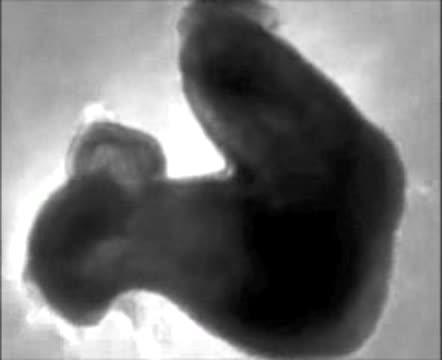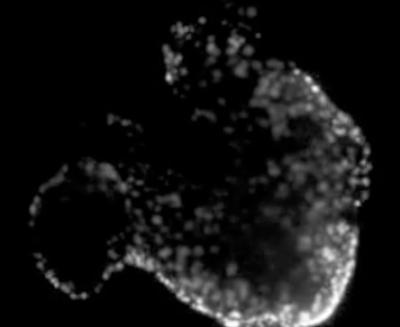After testing that their treated hearts were sufficiently softened or stiffened, they fluorescently labeled a small percentage of cells in the heart so they could quantify how hard the hearts were beating while looking at them under a microscope.
"When we treat the hearts with a chemical that breaks down the collagen," Majkut said, "we can directly see that the hearts aren't contracting as much because the labeled cells aren't getting as close to each other as they did before."
"The same effect was also seen when we treated the hearts with a chemical that helps the collagen crosslink and stiffen itself. Eventually, those hearts simply stop beating all together," she said.
The researchers saw that the further along the embryos were in maturation, the stiffer the "sweet spot" for their optimal beating was. As the collagen matrix of the heart stiffened, the concentration of the myosin motor proteins that contract the muscle increased along with it to keep pace.
"We also showed this dynamic on the level of the individual cell with heart cells and stem cell derived heart cells," Discher said. "We put isolated cells on gels that have the stiffness of the native heart, or else we make the gel softer or stiffer, and we see the same optimum. Surprisingly, the cells working together in heart tissue are even more sensitive to the stiffness of their environment."
Cardiologists might one day use such stiffness-optimized gels for growing heart tissue from stem cells to replace just the scarred and damaged parts of a patient's heart. A better fundamental understanding of the role collagen stiffness plays in the heartbeat could underpin other treatments as well.
"There were hints of this stiffness effect with adult hearts before, but this study made it very clear that the heart muscle cells are optimized from 'day one' to do work against the native stiffness they see in collagen, and that all of the factors that determine this relationship change in a coordinated way as the heart develops so it can stay in that sweet spot," Discher said.

Researchers from the University of Pennsylvania used fluorescently labeled embryonic chicken hearts to study the role collagen plays in the stress of a heartbeat. By treating the heart tissue with chemicals that that either made the collagen stiffer or softer and measuring how much individual cells moved on each beat, they could see there is an optimal stiffness "sweet spot" that changes as the heart develops.
(Photo Credit: University of Pennsylvania)

Researchers from the University of Pennsylvania used fluorescently labeled embryonic chicken hearts to study the role collagen plays in the stress of a heartbeat. By treating the heart tissue with chemicals that that either made the collagen stiffer or softer and measuring how much individual cells moved on each beat, they could see there is an optimal stiffness "sweet spot" that changes as the heart develops.
(Photo Credit: University of Pennsylvania)
Source: University of Pennsylvania